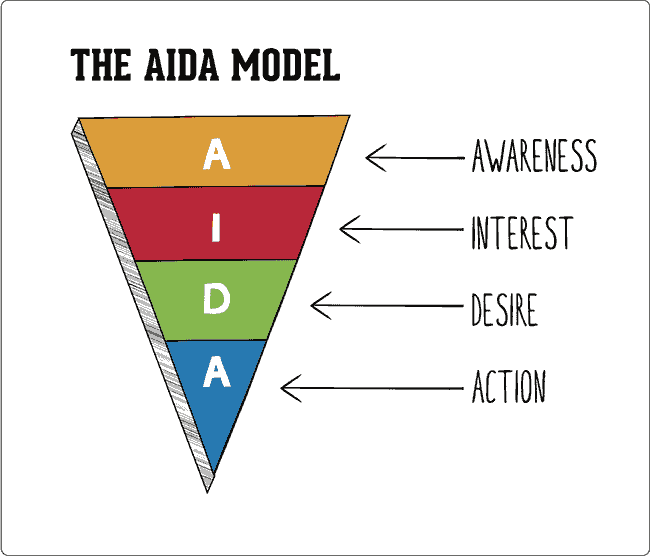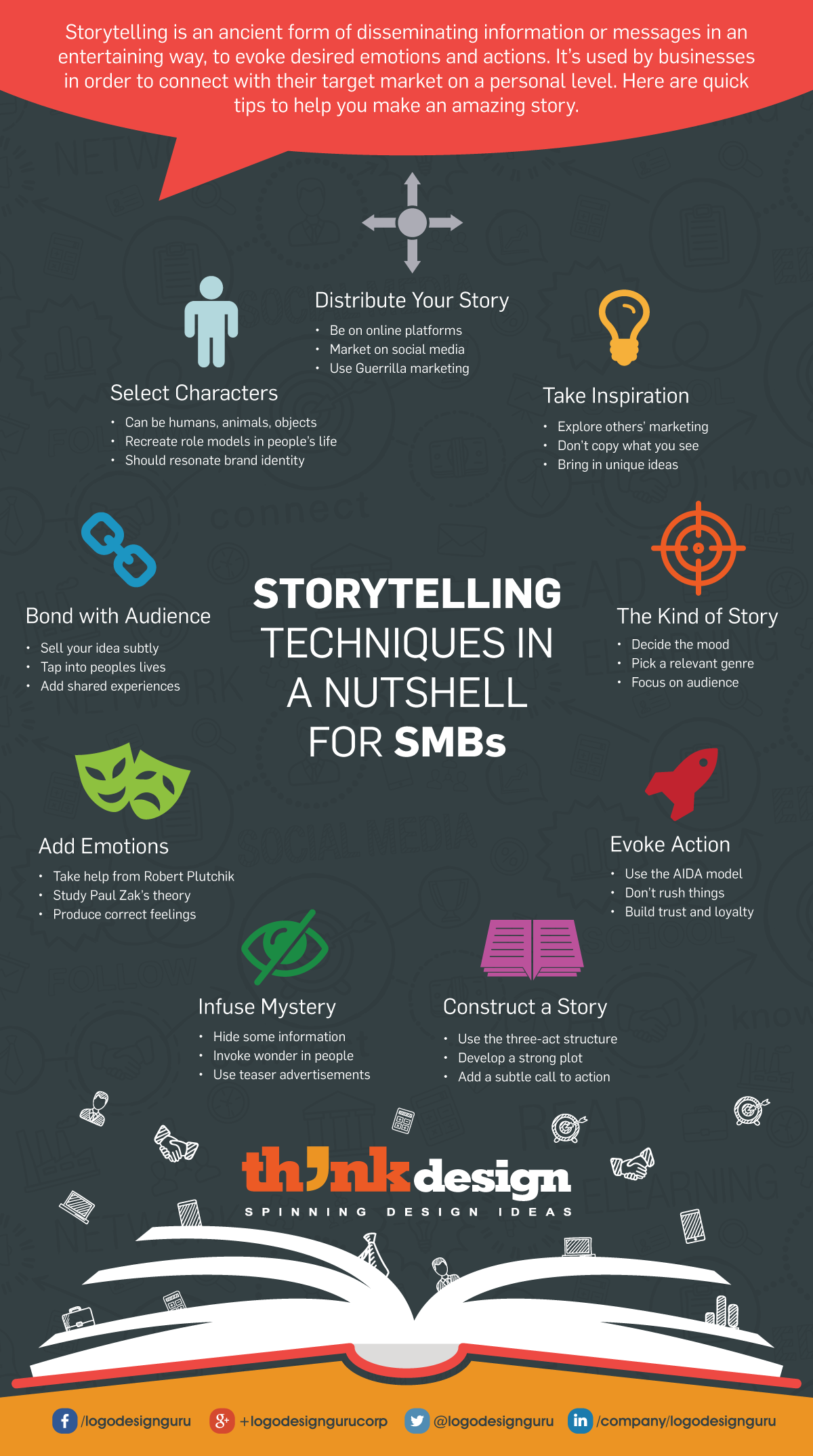Storytelling Techniques for the Holiday Season: Marketing Guide for Small Businesses
My mother narrated stories to me of courage, pleasure, achievement, sadness, and magic while conveying the subliminal lessons she wanted me to learn. That was when we bonded emotionally as well as intellectually. And so, each word of the story is an exploration into the world staged by the narrator, for a response or reaction. In stories, both the teller and the listener step into the realm of imagination with infinite possibilities.
Realizing the power of storytelling, marketers got the best idea! They began telling stories to their audiences. This achieved to things: it entertained the target market and it evoked a voluntary action from them.
Creating a Customized World with Storytelling
A place where you can present a problem and then provide a solution; an idea and its innovation; or a dilemma and how to find a way out. All in all, storytelling is the best way to present your message effectively to both your existing and potential customers. In this John Lewis advertisement “Monty, the Penguin” you’ll get a gist of what storytelling is all about and how it is used to visually represent the feeling of love and sacrifice in friendship. It has all the ingredients of a good story — a brilliant idea, befitting and promising characters, intriguing setting, smooth evolution of storyline, expressive sound track, and a captivating ending.
Using the art of storytelling in business marketing, you can easily connect with your audience and relate your story with them so they truly understand the message and act upon it. Using a strong plot and visuals, you can embed messages into people’s memory in a memorable way. People retain the story and its presentation in their minds and this helps them to form an opinion about a brand based on their reaction to your story.
Holiday Season Marketing
Marketers need to understand this universal tradition of storytelling, acknowledge its importance, and use it to inspire target market. You can use storytelling as a marketing tool for B2B and B2C communications, especially during the holiday season, to stand prominent among the large enterprises and conglomerates, without breaking your wallet.
Technically the holiday season excitement starts from Halloween and stays until Christmas. In between, there is Thanksgiving. During this time consumers are active in research. Plus their buying habits quadruple. They are looking for options way before the start of the holidays because they want to save time and prep for the upcoming occasions. Hence, it is very important for small businesses to start marketing their products and services in advance and then continue the effort until the end of December.
Marketing becomes highly challenging for small businesses, during the holiday season, because not only have the competitors tripled their efforts but large businesses also storm both non-virtual and digital streets with excessive marketing campaigns. These range from above-the-line and below-the-line activities using print, electronic and outdoor media.
To stand out from the crowd, you need to steer your focus towards things that matter to people. During Halloween and Thanksgiving up to Christmas – you aren’t simply demanding, but you are giving. You are channeling peoples’ emotions and feelings with things that are dear to them, with the aim to extract positive reactions from visitors, viewers, listeners or readers.
Before moving ahead with the planning and the execution of your marketing strategy for holiday season, you need to know some key things about storytelling.
Brand identity
Large companies and internationally recognized brands keep their brand identity consistent, and this is why people are able to recognize them. In all their promotional material during anytime of the year, they incorporate certain branding elements that tell the story of the brand and helps their audience differentiate brands. You should also do the same; it’s a fundamental step that will help you in characterizing your image. This way it will be easier for people to recognize you, your story and the message in it.
Brand Packaging
You must have read about the recent transformation and controversy about Dunkin Donuts and Starbucks cups created for the holidays. It has been an underrated attempt, and you must avoid such lame stunts. Remember that everything your business owns is a part of your brand’s identity. So be careful, because even the smallest things can harm your corporate image and your marketing efforts.
Target Market
In a conference John Bates, founder of Executive Speaking Success & Business Coaching, said “You’re not the hero of your talk, your audience is”. Holiday is for everyone; it is when you become selfless and you want to make others feel special. Hence, all your marketing activities should preferably be focused on your target market. Get insights: what do they like, dislike, hate, and love etc. Think like a friend or perhaps that crazy lover who wants to know everything about the girl. This sounds totally awkward, but you surely need to do thorough research.
Storytelling Techniques for SMBs
You’re the author or the narrator of your brand, and you need a compelling story this holiday season to inspire people to buy your products. So how do you incorporate storytelling techniques in your marketing? The infographic below sums it all up.
Get Inspiration
When you’re using the art or as some call it the “design” of storytelling, you need to brainstorm and explore. Inspiration is how humans evolve, and discover their own talents and capabilities. For example, developing nations get inspired from world powers to better their homeland. Similarly, we watch movies and most of them have a similar theme, but their plots and twists are different. So, your stories need to be unique among others who have the same theme, “holiday season”. The same way, it’s a beneficial idea for small businesses to observe how large and popular companies are marketing but in doing so, do not copy others.
Decide on a Genre
Uniqueness in your story will come when you know what kind of a story you want people to listen. You need to decide whether your story will revolve around tragedy or romance, and what will the mood be like, happy or sad. In making these crucial decisions, you can refer to the results of your market research. I personally enjoy fairytales that start with “once upon a time” and end with “…and they lived happily ever after”. Typical I know. However, not everyone likes such stories — some want to see or hear something that’s closer to real life. While I enjoy comedy, others may enjoy mystery or even a musical. Tap into such insights about your audience and then come up with a concept.
Be Methodological
The AIDA marketing model is always useful, although businesses and marketers don’t necessarily use this method now. While it’s an acronym for Attention, Interest, Desire and Action – modern developments incorporated satisfaction – and then some totally different ideas sprung, like the CAB and TIREA. However to be honest, the original one is basic and easily comprehensible plus workable.
As a small business, you need to grab the attention of your target market, arouse interest, and instill the feeling of desire before expecting any action from them. Take things slowly and give time to your audience to grasp the message and then trust you enough to buy your products, or to be loyal to you.

Structure Your Story
Every story needs a beginning, a plot with some challenges, a few characters with unique personalities and finally an interesting ending that generates thoughts in peoples’ minds or leads them to a reaction. When you’re telling a story, follow the structure of storytelling in marketing.
Similar to a film or a novel, brand stories should follow the three-act structure — which includes: a) setting up a situation, b) adding conflict and tension, and c) proposing a resolution. However, there’s one exclusive point in business stories: a call to action.
Spice up with Mystery
J.J. Abrams is an American writer, producer, actor and director who is fascinated by the idea of a “mystery box” that he developed growing up. During a TED Talks conference, he shared that “mystery is more important than knowledge”, because when you don’t exactly know what’s inside the box then you’re “invoking wonder” and people become impatient to reveal things. Thus, when you’re telling a story, you must withhold some information and doing this intentionally creates engagement. A teaser advertisement always makes audience think about what’s coming ahead. This is a good trick to cling the audience till you disclose more information. I, personally, love this idea of hide and seek.
Watch Abrams entire talk on the subject here.
Listen to more inspiring TED talks that’ll help you construct a creative story.
Stimulate the Audience
In order to excite and inspire audience, you can take help from Robert Plutchik’s Wheel of Emotions, constructed in 1980 to visualize basic emotions and those that are derived from these.

In addition, Paul Zak suggests that peoples’ feelings produce neurochemicals in their bodies, which kindle actions. For example a sad story will produce cortisol, a stress hormone or oxytocin, a hormone that promotes empathy. Using such techniques will assist you in adding drama to your story, and in encouraging people to respond in the way you desire. If a marketer is able to target the right feeling that produces a desired action, then the goal is accomplished.
Build a Relationship
I’m sure at one point you must have thought that first she’s saying remember your brand identity and then she’s suggesting not to brag and be selfless. Well, the point is to maintain equilibrium. When you’re constructing your brand’s story, you must sell the idea creatively, yet indirectly. While letting your voice out and telling people what you stand for, you must illustrate why you’re important to them.
“Stories are continuously evolving and spontaneous iterations are frequently based on community memes, popular culture and events.” — Lee Odden. Tell stories people can identify, instilling it with shared emotions and experiences. This is when your small business will receive recognition, and ultimately at some point, loyalty.
Characters are Cherished
How can you add emotions in a story or relate to your audience? In a publication, Leading Actors Of The Brand Story: Brand Characters, Duygu Aydõn of Selcuk University, Turkey has identified that brands create characters, which can be human beings, mythological figures, objects, cartoon characters and animals that are personalized and presented to consumers. This helps audience recognize a brand as an identity because characters give meaning to the brand, and give an emotional appeal to the business.
A good strategy is to recreate existing real life characters, or take characters people know such as the Santa Claus or someone as generous as him, like a father who has worked hard to provide food on the table for his family to enjoy during Christmas. In all this, don’t forget your brand’s personality. The characters you choose should also mirror your brand vision and the purpose of the marketing activity.
Audience look at stories and step into the shoes of the characters, or remember a similar situation that happened in their lives. This is when they truly connect with your brand.
Tap an Effective Medium
There’s a plethora of communication media available for you to present your story in the best possible way that you can afford. You may not be able to get a primetime on television for your advertisement, but you’ve got many other impactful ways to get your story out there.
For small businesses, the cheapest and the most lucrative platform is the internet. In November and December, e-commerce rises 30% because of the holidays. In 2014, 78% of shoppers in USA did holiday research using the internet. You can use social media platforms, video uploading websites, and local advertising portals, make themed blogs and micro-sites. You can also use traditional marketing methods, such as the outdoors.
Guerrilla marketing is perfect for small businesses. It helps to promote products in a creative and unconventional way. The challenge here, however, is that marketers need to be highly imaginative. All your marketing activities are done on streets and other areas with an access to public, such as shopping malls, beaches and parks etc. You can make temporary sculptures, istallations or create street art. You can remain simple or go wild, it’s up to you.
Great stories “spark the connection that lights the fire of passion”. These powerful connections result in trust, and this is certainly a return on investment. In all this, remember that your story must be inspiring or else all your effort, time and money will go to waste. As a small business you cannot afford this loss, especially during the holiday season. Take these tips and ease the process. Here’s a quick guide on how to use storytelling in marketing.
Share This:
Embed this Infographic on your site using the html below:



